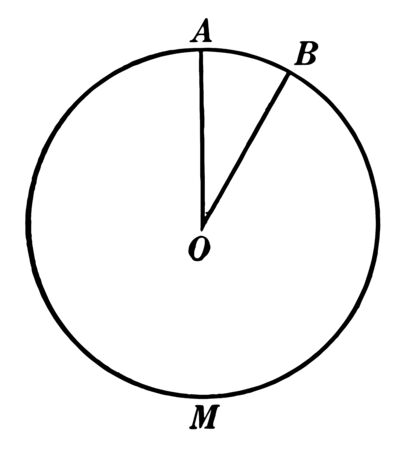Introduction to Wheel Physics
Step back in time, and youll find that wheel size has always been more than just a number—its a symbol of American ingenuity and attitude on the open road. From the chrome-laden muscle cars of the 1960s to today’s precision-engineered street machines, the diameter and width of wheels have defined not only the look but also the very soul of our vehicles. In classic American car culture, choosing your wheels wasn’t just about aesthetics; it was about making a statement and unlocking new dimensions of performance. Understanding how wheel diameter and width influence acceleration, braking, and cornering isn’t just for engineers—it’s woven into the fabric of every enthusiast who ever dreamed of burning rubber at a stoplight or carving up canyon roads. As we revisit these fundamentals, we set the stage for appreciating why wheel choices became—and remain—a defining factor in the pursuit of automotive excellence across generations.
2. Diameter Dynamics: Acceleration Explained
When it comes to launching a muscle car off the line, wheel diameter isn’t just a number—it’s a time-honored key to that classic, tire-smoking acceleration American hot rodders have chased for decades. Let’s take a step back into the golden era of Detroit steel, where racers would swap wheels and tires in search of the perfect quarter-mile run. The science behind this? It all starts with rotational inertia and gear ratios.
Bigger wheels cover more ground per rotation, but they also require more torque to get moving—a detail that can dampen initial acceleration if your engine isn’t up for the challenge. Meanwhile, smaller diameter wheels spin faster and are easier to launch, getting you off the line with that punchy, seat-of-the-pants feel every street racer remembers.
| Wheel Diameter | Acceleration Effect | Classic Muscle Car Example |
|---|---|---|
| Small (15” or less) | Quicker launch, higher RPMs off the line | 1969 Camaro SS Drag Pack |
| Medium (16”-17”) | Balanced launch vs. speed, versatile for street & strip | 1970 Dodge Challenger R/T |
| Large (18”+) | Smoother ride at high speeds, slower initial acceleration | Modern Restomod Builds |
The Hot Rodder’s Sweet Spot
In hot rod history, finding that “just right” diameter was part art, part science. Too small, and you’d be redlining before hitting peak power; too large, and your launch would feel sluggish. Classic racers often stuck with 14”-15” wheels—paired with fat rubber—for a reason: maximum grip and instant response when the Christmas tree went green.
Modern Takeaways
Today’s muscle cars blend heritage with modern engineering, but the lesson remains: wheel diameter shapes your acceleration experience. If you crave that old-school straight-line thrill—smoke, thunder, and a dash of nostalgia—consider how your choice in wheel size pays homage to America’s rich automotive legacy while delivering the performance you want at every stoplight showdown.
![]()
3. The Width Factor: Braking Power & Pedal Feel
Let’s step into the world of wheel width—a detail that can make or break your driving confidence, especially when you’re barreling down an open stretch of Route 66 or making a last-second stop at a busy intersection. When you opt for wider wheels, you’re not just making a cosmetic upgrade; you’re laying down more rubber on the road. This expanded contact patch is where the magic happens: it means your tires grip the asphalt with greater authority, translating every ounce of braking force straight to the pavement.
In classic American fashion, where muscle cars and big trucks rule the highways, that extra grip gives you hair-raising stopping power. Whether you’re hauling a heavy load through the Rockies or cruising the Pacific Coast Highway, wider wheels let your brakes dig in, shaving precious feet off your stopping distance. The pedal feel? It becomes firmer and more responsive—each press delivers feedback that’s both reassuring and exhilarating, connecting driver and machine in a way that’s pure automotive nostalgia.
Of course, this isn’t just about stopping quicker; it’s about control. When you hit the brakes hard on winding backroads, those wider tires help keep your car stable and planted, resisting skids and slides. In short, choosing wider wheels isn’t just an upgrade—it’s a ticket to safer, more spirited driving wherever America’s roads take you.
4. Cornering Classics: Rolling Through the Curves
When it comes to carving corners on legendary American mountain roads or tearing through a tight autocross course, wheel diameter and width become more than specs—they’re the soul of your car’s handling. Picture winding up Mulholland Drive at sunset or hunting apexes at your local SCCA event: every degree of turn, every ounce of grip, is a dance between rubber and asphalt shaped by your wheels’ dimensions.
The Science Behind the Swerve
Wider wheels generally mean a larger contact patch—the area where rubber meets road—translating to improved grip during hard cornering. But there’s an artful balance: go too wide and you risk tramlining or adding excess unsprung weight, making the ride less nimble. On the flip side, a modest wheel width can offer quicker steering response and lighter feel, especially in classic muscle cars or vintage roadsters cherished on Route 66 cruises.
Diameter Dynamics
Larger diameter wheels can accommodate lower-profile tires, which often means stiffer sidewalls for sharper handling response—a must for precise cornering at autocross speeds. However, this increased stiffness sometimes comes at the cost of ride comfort on bumpy canyon roads. Smaller diameters, with their taller tire sidewalls, allow a touch more flex—ideal for soaking up imperfections and keeping those classic Detroit iron cruisers planted without shaking your teeth loose.
Cornering Characteristics by Wheel Size
| Wheel Width | Wheel Diameter | Cornering Grip | Steering Feel | Best For |
|---|---|---|---|---|
| Narrow | Small | Moderate | Crisp & Light | Classic Cruising, Vintage Cars |
| Wide | Large | High | Sharp & Responsive | Autocross, Mountain Roads |
| Wide | Small | Good (with Flex) | Smooth but Heavier | Mixed Use, Comfort-Oriented Performance |
| Narrow | Large | Lower (less contact) | Twitchy & Direct | Show Cars, Straight-Line Cruisers |
No matter your ride—from V8-powered legends roaring through Appalachia to nimble Miatas darting around cones—the interplay between wheel width and diameter shapes how confidently you attack each bend. It’s a celebration of engineering and passion: old-school craft meeting modern performance as you roll through America’s most iconic curves.
5. Trade-Offs and Real-World Choices
If you’ve ever spent a Saturday morning in your garage, running your hands over the smooth lip of a vintage wheel or admiring the precision of a modern forged rim, you know that choosing the right wheel setup is as much art as it is science. The classic hot rodders and muscle car builders understood this well—every inch of diameter or extra fraction of width was a conscious choice, balancing performance with style and personal expression.
When it comes to acceleration, braking, and cornering, the trade-offs between wheel diameter and width are rooted in both timeless craftsmanship and cutting-edge engineering. Larger wheels can give your ride an aggressive stance and improve high-speed stability, but they might add weight, which can sap some of that raw acceleration you crave. On the flip side, going with a smaller diameter keeps things light and lively—think of those classic pony cars darting through winding backroads—but you may sacrifice some grip or visual drama.
Width brings its own set of choices. A wider wheel means more rubber meets the road, translating into greater traction during hard launches and confidence-inspiring grip when carving corners. Yet too much width can introduce tramlining or increase rolling resistance, making daily driving less enjoyable. Classic craftsmanship reminds us that sometimes less is more; there’s elegance in a perfectly sized wheel that complements both the car’s lines and its intended use.
Modern engineering gives us tools our forebears could only dream of: lightweight alloys, advanced tire compounds, computer-aided design. These allow enthusiasts today to chase both form and function without compromise—but only if we respect the lessons of the past. Whether you drive a restored American icon or a contemporary sports coupe, picking your wheels isn’t just about specs—it’s about how those choices reflect your lifestyle and driving dreams.
Ultimately, there’s no one-size-fits-all answer. The right combination comes down to how you plan to use your vehicle: is it for weekend canyon runs, stoplight-to-stoplight showdowns, or cruising Main Street at sunset? Embrace the balance between heritage-inspired aesthetics and modern performance needs. Like any great build, the perfect wheel setup honors both where we’ve been and where we’re going on America’s roads.
6. Conclusion: Timeless Tuning Tips
If there’s one thing old-school mechanics and modern performance junkies can agree on, it’s this: the fundamentals never go out of style. Wheel diameter and width may seem like just numbers stamped on a rim, but as every seasoned gearhead knows, they’re the secret sauce in your ride’s recipe for acceleration, braking, and cornering.
Looking back through decades of American car culture—from muscle cars tearing down Route 66 to tuner legends lighting up Main Street—smart wheel choices have always set winners apart. The classics remind us: bigger isn’t always better, and wider demands wisdom. It’s about balance, craftsmanship, and feeling the road with every turn.
So here’s our enduring advice for future generations of enthusiasts: Don’t chase trends blindly. Instead, blend the spirit of yesterday with hands-on experimentation today. Take time to test how different setups feel under your own hands—on the open highway or your favorite back road. Listen to what your car is telling you through the steering wheel and pedals.
Remember, true performance isn’t built in a day or bought off a shelf—it’s tuned in garages, refined at midnight meets, and passed down over shared stories and busted knuckles. Keep that passion alive. Trust your instincts, respect the lessons of those who came before you, and never stop tuning until your ride feels just right.


